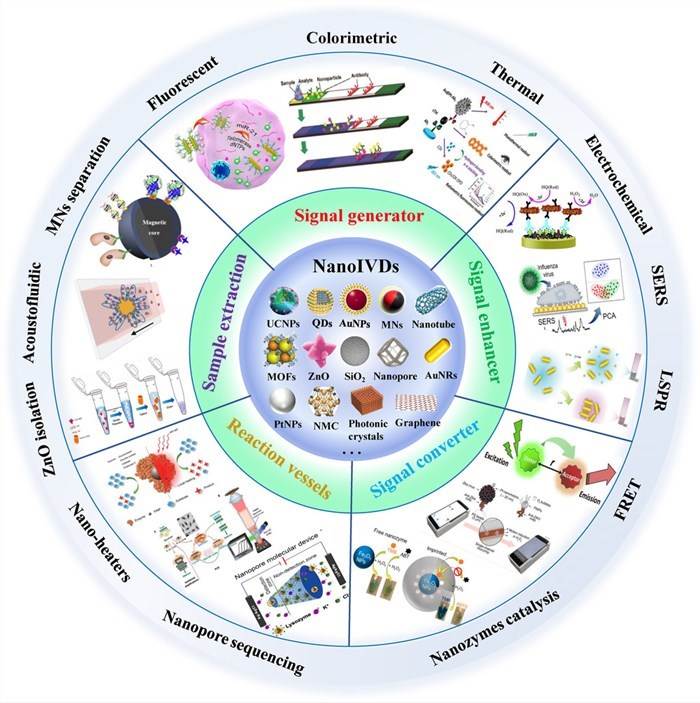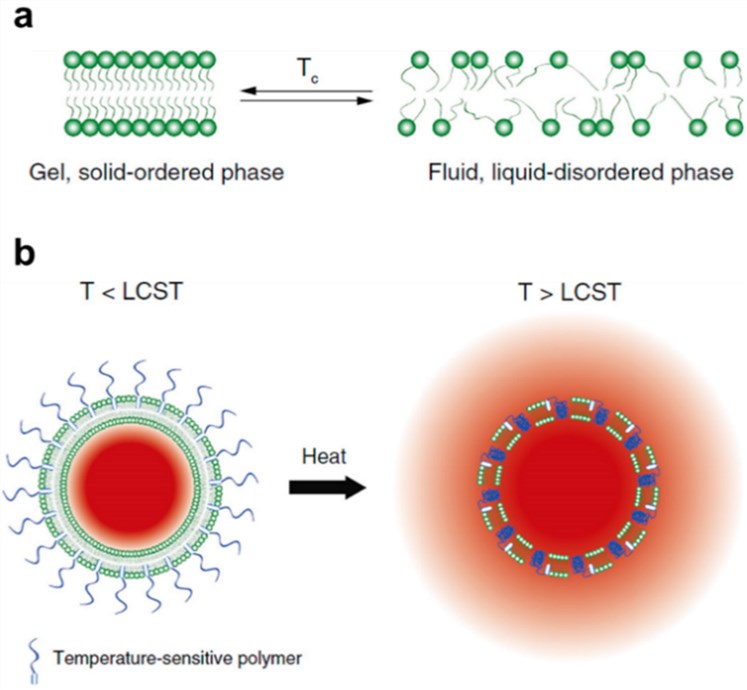Brief Introduction of Thermo-sensitive Nanomaterials
With the development of nanotechnology, more and more nanomaterials have been produced. Due to their unique physical and chemical properties, such as large surface area, excellent biocompatibility, and specific catalytic activity, nanomaterials provide excellent candidates for materials for drug delivery systems, analytical and diagnostic devices, and thermal therapy. In addition to the inherent characteristics of nanomaterial, thermosensitive nanomaterials have their unique thermosensitive characteristics, thus making them have a wider range of biomedical applications. For example, thermosensitive nanomaterials may be applied for tumor therapy because cancer cells are more susceptible to heat due to their immature vascular system in contrast to healthy cells. In the in vitro diagnosis (IVD) applications, thermosensitive nanomaterials also play a variety of crucial roles such as a signal generator, signal converter, signal enhancer, reaction vessel.
 Fig.1 The crucial roles of nanomaterials in nanotechnology-based in vitro diagnostics (nanoIVDs).1, 3
Fig.1 The crucial roles of nanomaterials in nanotechnology-based in vitro diagnostics (nanoIVDs).1, 3
Thermo-sensitive Nanomaterials as Diagnostic Devices
Thermo-sensitive nanomaterials, mainly as biosensors, have a great potential for analytical and diagnostic applications. Biosensors have two key elements, a biorecognition element (e.g., nucleic acids, enzymes, aptamers, etc.) that specifically binds to a target molecular and a transducer component that converts the biochemical event into a measurable signal. In the case of thermal-based biosensors, thermal changes are detected. Some nanomaterials can reversibly switch color as a response to a thermal stimulus, which is promising for developing as biosensors. Scientists have synthesized a new class of gold-polymer, micelle-forming, hybrid nanoparticles through combining gold nanoclusters with thermo-sensitive diblock copolymers of poly (ethylene glycol) (PEG) and PNIPAm. The thermosensitive nanoparticles improved the native fluorescent signal of Au nanoparticles and had great application prospects in bioassays, nanosensors, and fluorescent live-imaging. Furthermore, some types of thermosensitive nanoparticles are also used as contrast agents in some imaging techniques such as positron emission tomography (PET), single-photon emission computed tomography (SPECT), and magnetic resonance imaging (MRI), greatly improving the resolution of the imaging.
 Fig.2 Schematic representation of thermoresponsive liposomes.2, 3
Fig.2 Schematic representation of thermoresponsive liposomes.2, 3
Examples of Disease Diagnosis
Proteases have been proved to play an important role in cancer tumor invasion, angiogenesis, and metastasis, thus providing potential biomarkers for the early diagnosis of cancer. Researchers designed a protease-activity nanosensor which is composed of thermo-sensitive liposomes and co-encapsulated magnetic nanoparticles and functionalized protease substrates. was used to measure tumor protease activity in vivo. Another research teams have demonstrated the acetylated polyethylenimine (PEI)-entrapped Au nanoparticles (Ac-PE-AuNPs) could be used for accurate diagnosis of hepatic carcinoma by negative computed tomography imaging.
Our Capabilities
Creative Biolabs has organized an excellent expert team who have extensive experience in the development of IVD assay development. We are committed to offering a full range of IVD assay development services based on our expertise and a variety of detection and analytic techniques. We are experienced and dedicated to helping customers in areas of IVD assay development. If you are interested in our services, please contact us to discuss your project and get more details.
References
- Chen, Kuan, et al. "Applications and regulatory of nanotechnology‐based innovative in vitro diagnostics." View 2.2 (2021): 20200091.
- Sánchez-Moreno, Paola, et al. "Thermo-sensitive nanomaterials: recent advance in synthesis and biomedical applications." Nanomaterials 8.11 (2018): 935.
- Distributed under Open Access license CC BY 4.0, without modification.
For Research Use Only.

